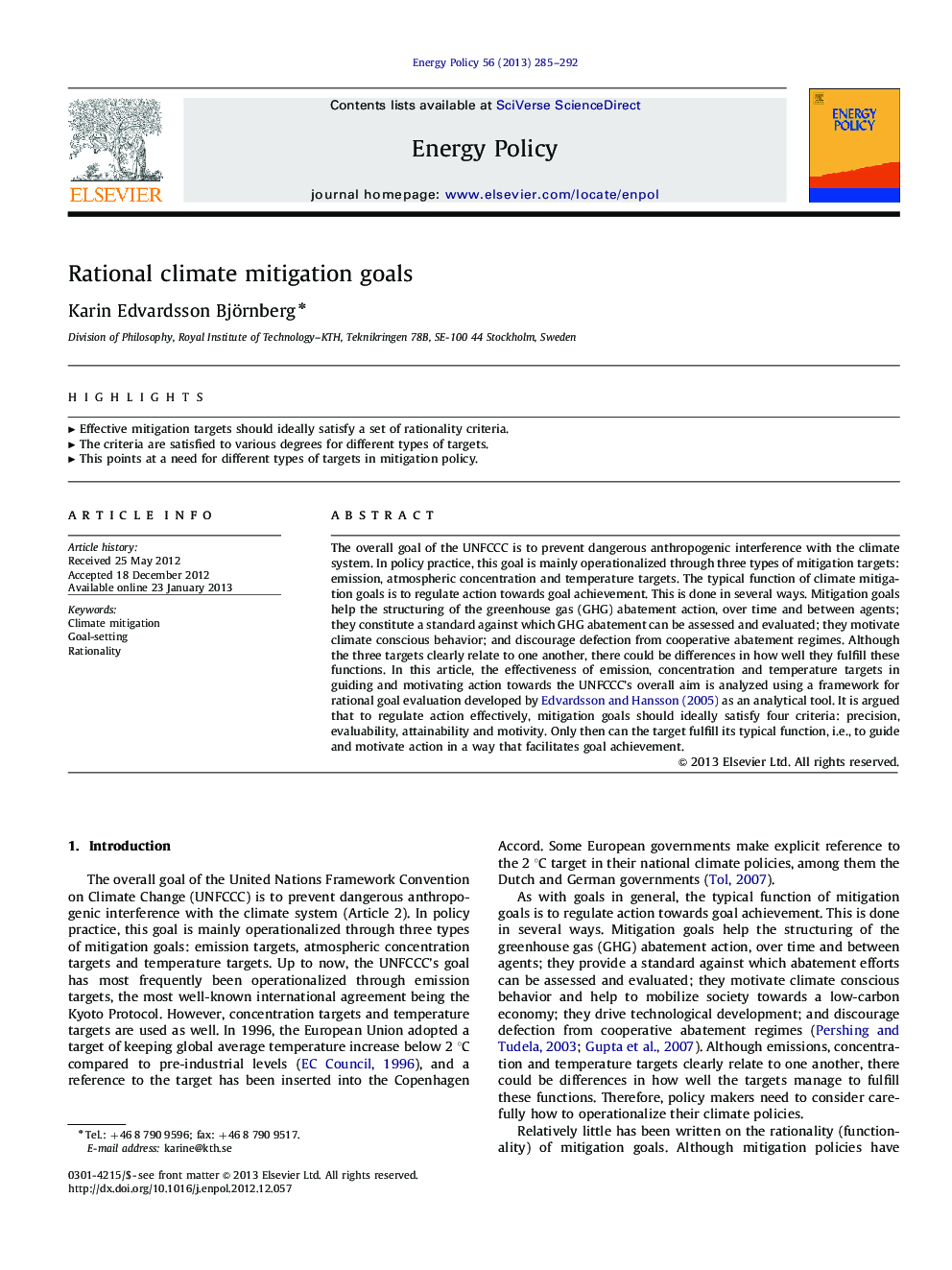| کد مقاله | کد نشریه | سال انتشار | مقاله انگلیسی | نسخه تمام متن |
|---|---|---|---|---|
| 994785 | 1481302 | 2013 | 8 صفحه PDF | دانلود رایگان |

The overall goal of the UNFCCC is to prevent dangerous anthropogenic interference with the climate system. In policy practice, this goal is mainly operationalized through three types of mitigation targets: emission, atmospheric concentration and temperature targets. The typical function of climate mitigation goals is to regulate action towards goal achievement. This is done in several ways. Mitigation goals help the structuring of the greenhouse gas (GHG) abatement action, over time and between agents; they constitute a standard against which GHG abatement can be assessed and evaluated; they motivate climate conscious behavior; and discourage defection from cooperative abatement regimes. Although the three targets clearly relate to one another, there could be differences in how well they fulfill these functions. In this article, the effectiveness of emission, concentration and temperature targets in guiding and motivating action towards the UNFCCC's overall aim is analyzed using a framework for rational goal evaluation developed by Edvardsson and Hansson (2005) as an analytical tool. It is argued that to regulate action effectively, mitigation goals should ideally satisfy four criteria: precision, evaluability, attainability and motivity. Only then can the target fulfill its typical function, i.e., to guide and motivate action in a way that facilitates goal achievement.
► Effective mitigation targets should ideally satisfy a set of rationality criteria.
► The criteria are satisfied to various degrees for different types of targets.
► This points at a need for different types of targets in mitigation policy.
Journal: Energy Policy - Volume 56, May 2013, Pages 285–292